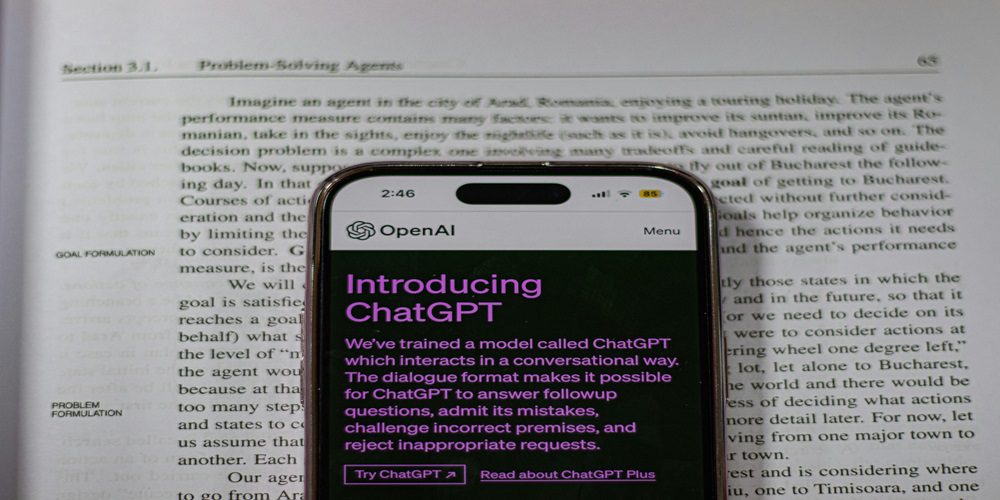The Role of Artificial Intelligence in Language Generation

In a world where language is continuously evolving and expanding, the role of artificial intelligence in language generation cannot be understated. From chatbots to voice recognition systems, AI has revolutionized the way we communicate and interact with technology. In this blog post, we will dive into the fascinating world of AI-driven language generation and explore its implications for society, communication, and beyond. Join us as we unravel the complexities of this cutting-edge technology and discover its potential to shape the future of human expression.
Artificial Intelligence (AI) has been a buzzword in recent years, and it has become an essential part of our daily lives without us even realizing it. From voice assistants like Siri to personalized recommendations on streaming platforms, AI technology is all around us. One of the most intriguing areas where AI is making significant contributions is in language generation.
But what exactly is AI, and how does it relate to language generation? In simple terms, AI refers to computer systems or machines that can perform tasks that typically require human intelligence. These include problem-solving, decision-making, pattern recognition, and natural language processing.
Language generation, on the other hand, refers to the process of producing texts or speech using artificial intelligence techniques. It involves training computers to understand natural human languages such as English or Spanish and generating text or speech based on that understanding.
The field of language generation has evolved rapidly over the years with advancements in machine learning algorithms and computational power. Today’s AI-powered language generators can produce text that closely resembles human writing styles and tone.
There are various applications for AI-powered language generation. One of its most common uses is in chatbots – computer programs designed to simulate conversation with human users through messaging platforms. Chatbots use natural language processing (NLP) techniques to interpret user inputs and respond accordingly.
Another increasingly popular application of this technology is in content creation for digital marketing purposes. With the rise of e-commerce and online businesses, companies are always looking for ways to generate high-quality content quickly and efficiently. AI-powered tools can aid in this process by generating product descriptions or email subject lines with minimal human input.
In addition to these practical applications, research into using AI for creative writing is also gaining traction. Some experiments have shown promising results with computers composing poems or short stories based on patterns observed from human literature.
However, despite its many achievements, there are still challenges facing AI language generation. For instance, computers still struggle with understanding context and nuance in language, leading to errors or inappropriate responses. Additionally, there are concerns about the ethical implications of using AI for potentially biased or misleading content.
AI-powered language generation is an exciting field that continues to expand and impact our daily lives. With further advancements and continuous research, we can expect to see even more impressive applications of this technology in the future.
How AI is Used in Language Generation Today
Language generation is the process of generating written or spoken language using artificial intelligence (AI). It involves computational systems that are trained on vast amounts of data to mimic human-like language production. This technology has numerous applications in various industries, including customer service, marketing, and content creation. In this section, we will discuss how AI is currently being used in language generation and its impact on these industries.
One of the most common use cases of AI in language generation is chatbots. These are computer programs designed to simulate conversations with users through messaging platforms, websites, or mobile apps. With advancements in natural language processing (NLP) and machine learning algorithms, chatbots can now understand complex user queries and generate accurate responses in real-time. Chatbots have become a vital tool for businesses looking to improve their customer service by providing 24/7 support.
Another prominent application of AI in language generation is content creation. Content creation involves writing articles, product descriptions, social media posts, and more. With the huge demand for quality content across various industries, companies are turning to AI-powered tools to generate high-quality written material quickly and efficiently. These tools work by analyzing existing content online and then creating unique versions based on templates or guidelines provided by users.
AI is also making an impact on the field of marketing through automated copywriting solutions. These solutions use machine learning algorithms to analyze data such as consumer demographics, preferences, trending topics, etc., to generate personalized ad copies that resonate with specific target audiences. This technology allows businesses to create multiple versions of their marketing materials for different segments quickly.
In addition to these applications, AI is also being used in email automation software for personalization at scale. By analyzing past interactions with customers such as email opens/clicks and website visits/purchases, these tools can suggest relevant subject lines and email content tailored to each individual recipient’s interests.
Lastly, AI-based translation services have revolutionized global communication. These services use NLP and deep learning to accurately translate text from one language to another. With the boom of e-commerce, businesses can now reach a broader international audience without worrying about language barriers.
Benefits of AI in Language Generation
1. Accuracy and Efficiency: One of the key benefits of using AI in language generation is its ability to produce highly accurate and efficient results. With advanced algorithms and machine learning techniques, AI can analyze vast amounts of data, recognize patterns, and generate text that is both precise and relevant. This not only saves time but also reduces the chances of errors or human bias.
2. Personalization: AI-powered language generation systems have the capability to create personalized content based on individual preferences. By analyzing user behavior and demographics, AI can tailor the language used in the generated content to suit a specific audience. This enables businesses to communicate more effectively with their customers, resulting in better engagement and higher satisfaction.
3. Cost-Effective: Traditional methods of creating content involve hiring writers or outsourcing content creation tasks, which can be expensive for businesses. Using AI for language generation significantly reduces these costs as it eliminates the need for human resources while delivering high-quality results at a fraction of the cost.
4. Time-Saving: In today’s fast-paced world, time is an invaluable resource. Manual writing processes are time-consuming, often taking days or weeks to produce large volumes of content. However, with AI-generated language, complex tasks such as summarization or translation can be completed within seconds or minutes.
5. Multilingual Capabilities: In our increasingly globalized world where businesses have a broad customer base across different regions and languages, having multilingual capabilities is essential for effective communication. With natural language processing (NLP) technology, AI-powered systems can understand various languages and generate output that is coherent and accurate in multiple languages simultaneously.
6.The Ability to Learn and Adapt: A significant advantage of using AI in language generation is its ability to learn from past interactions with users and adapt accordingly. Over time, these systems become smarter by understanding common mistakes made by previous iterations while generating text that continues to improve with minimal intervention.
7. Enhanced Creativity: AI-powered language generation systems can come up with unique and creative content that may not have been possible through manual writing processes. By analyzing vast amounts of data, AI algorithms can generate new ideas and concepts, allowing businesses to stand out from their competitors.
Challenges and Ethical Implications of AI in Language Generation
While artificial intelligence (AI) has revolutionized the field of language generation, it also presents a number of challenges and ethical implications that need to be carefully considered. As AI continues to advance and become more integrated into our daily lives, it is important to examine the potential consequences of relying on intelligent machines for generating human-like language.
One major challenge that arises with AI in language generation is the issue of data bias. Language models are trained using large datasets, which are often biased towards certain demographics or viewpoints. This can result in perpetuating stereotypes or discriminatory language, leading to negative impacts on society. To combat this issue, there is a growing need for diverse and inclusive training data sets, as well as careful monitoring and evaluation of the output generated by language AI systems.
Another concern surrounding AI in language generation is its potential impact on employment opportunities. While AI has shown impressive ability in creating content, there are fears that it could replace human jobs, particularly in industries such as journalism and content creation. This raises questions about the responsibility of companies utilizing AI for language generation to ensure they are not causing harm to individuals who may lose their jobs due to automation.
Privacy is another crucial aspect to consider when it comes to AI in language generation. With advancements in natural language processing (NLP) technology, machines are now able to create highly realistic written or spoken content based on personal data collected from users online. This raises concerns about how this information will be used and if individuals have given their consent for their data to be utilized by AI systems for generating content.
Furthermore, there are ethical implications associated with using machine-generated text without clearly disclosing its origin. Plagiarism becomes a significant concern when content created by an algorithm looks identical or very similar to original human-written work. The responsibility lies on both organizations using these tools and individuals producing the content generated by them to ensure proper attribution and honesty in their outputs.
Current Applications of AI in Language Generation
Artificial Intelligence (AI) has made significant advancements in the field of language generation, and its applications are continuously expanding. It is now being used in various industries to automate tasks that were previously done manually or with human involvement. In this section, we will explore some current applications of AI in language generation.
1) Automated Content Creation:
One of the most prominent applications of AI in language generation is automated content creation. With the help of Natural Language Processing (NLP) algorithms and deep learning techniques, AI can generate human-like text for a variety of purposes, such as news articles, product descriptions, social media posts, etc. This technology has revolutionized the content creation process by reducing costs and time while also increasing productivity and efficiency.
2) Chatbots:
AI-powered chatbots are becoming increasingly popular in customer service and support roles. These chatbots use natural language understanding (NLU) to interpret user queries and respond with appropriate answers. They can handle multiple conversations simultaneously without any delay or errors, making them an ideal solution for businesses looking to improve their customer communication process.
3) Text Summarization:
Another application of AI in language generation is text summarization. It involves using machine learning algorithms to understand the main points from a piece of text and present it in a concise summary form. This technology is useful for content curation platforms, research papers compilation, news aggregation sites, etc., where large amounts of data need to be condensed into smaller summaries for easy consumption.
4) Personalized Content Curation:
With the help of AI-driven recommendation engines, personalized content curation has become more accurate than ever before. These systems analyze users’ browsing history, preferences, and behavior patterns to recommend relevant content that they are likely to engage with. This not only enhances user experience but also helps businesses tailor their offerings according to individual needs.
5) Translation Services:
Language barriers often pose a challenge for businesses operating in multiple countries. AI-powered translation services have made it easier to overcome this hurdle. These systems use natural language processing and statistical machine learning techniques to accurately translate text from one language to another. The translations are not only fast but also improving in quality as the technology continues to evolve.
Future Possibilities and Advancements in the Field of AI and Language Generation
The field of artificial intelligence (AI) has been rapidly expanding in recent years, with advancements in technology allowing for more sophisticated and complex systems to be developed. One area that has seen significant progress is language generation, where AI is used to create written or spoken content. While we have already witnessed impressive developments in this field, there are still many exciting possibilities yet to be explored.
One potential future possibility is the ability of AI to generate human-like conversations. Currently, most language generation models require a predefined set of prompts or topics to generate text, limiting their ability to engage in natural conversation. However, researchers are working on developing conversational AI agents that can understand context and respond spontaneously like a human would. This could revolutionize the customer service industry by creating chatbots that can effectively communicate with customers on a personal level.
Another exciting development is the use of AI-powered virtual assistants for writing tasks. These assistants could help writers by generating ideas, suggesting improvements to existing content or even generating complete drafts based on given parameters such as tone, language style preferences, and target audience. This could potentially save writers valuable time and enhance the quality of their work.
Furthermore, advances in natural language processing (NLP) are making it possible for AI systems to not only generate text but also understand its meaning and context better. In the past, language generation models struggled with tasks such as summarizing information or answering questions accurately due to their limited understanding of language nuances. However, with NLP technologies such as transformer models like BERT (Bidirectional Encoder Representations from Transformers), AI-generated content is becoming more insightful and accurate than ever before.
In addition to these advancements, there are also discussions around developing ethical guidelines for AI-generated content. As machines become more capable of producing human-like content autonomously, concerns have arisen regarding accountability and responsibility for what they produce. As a result, researchers are exploring the development of ethical frameworks to govern AI-generated content and ensure its responsible use.
Conclusion
In conclusion, artificial intelligence has become an integral part of language generation and is continuously evolving to enhance communication in various fields. From voice assistants to automated translation services, AI has proven its effectiveness in understanding and producing language with speed and accuracy. As technology advances, so will the capabilities of AI in generating language, leading us towards a more efficient and interconnected world. The role of AI in shaping our linguistic landscape is evident, and it will continue to play a significant role in how we communicate now and in the future.





